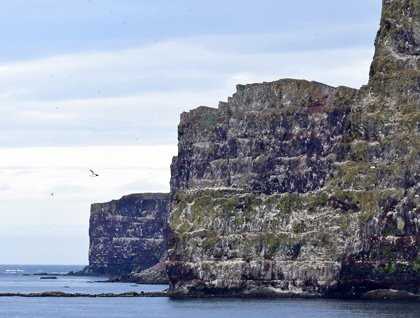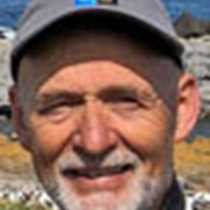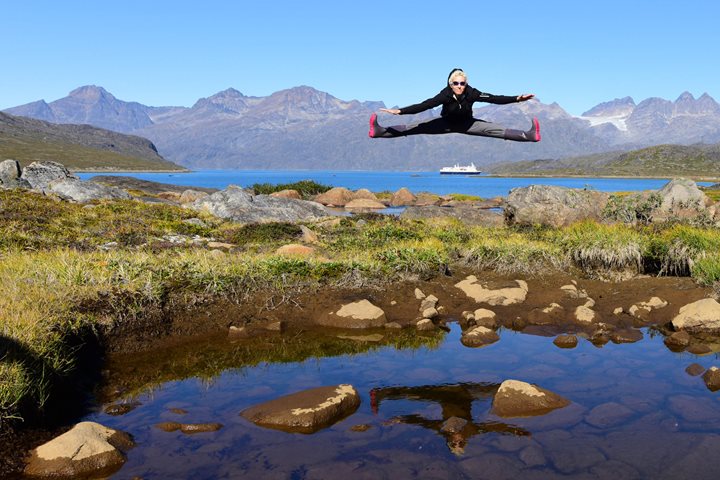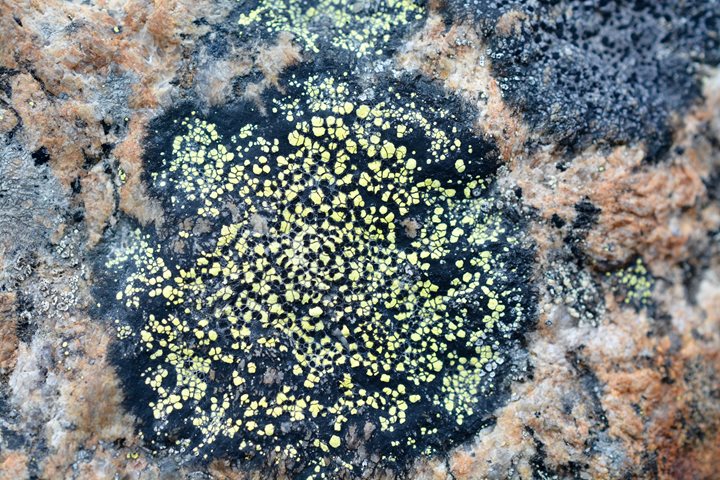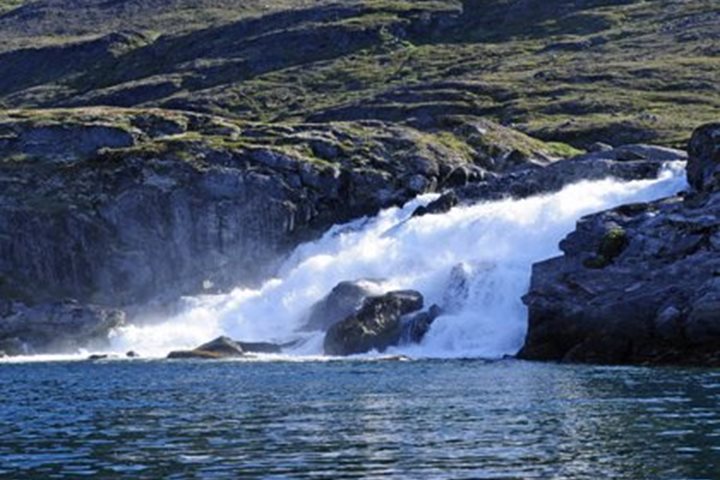As our first morning of sailing began, National Geographic Explorer made its way towards Latrabjarg, the westernmost point of Iceland. This sheer cliff is 14 km (8.6 miles) long and well over 1,200 feet high. Latrabjarg has Iceland’s largest nesting colony of seabirds, including the most numerous razorbill colony in the world. The cliff is home to half a million nesting razorbills, in addition to common guillemots, black guillemots, northern fulmars, kittiwakes, and puffins. The razorbills resemble small penguins, and their French name is petit pinguoin. They do, however, belong to the auk family (eg: puffins and guillemots). As we were slowly cruising along the cliff, we saw great numbers of these seabirds feeding on the calm sea around the ship, including some puffins, a great favorite with the guests.
Following breakfast, the expedition team and the Lindblad-National Geographic alliance were introduced to the guests. In the late morning Steve Morello, one of the certified photo instructors, gave a talk in the lounge on improving photographic techniques.
During the afternoon we went ashore on the island of Flatey. Hikes of various lengths, as well as a special photo walk, were offered. Flatey (“flat island”) is located in the midst of Breidafjördur (“the broad fjord”) and is one of the largest islands here. Surrounded by rich fishing grounds, it attracts numerous species of seabirds. During the Middle Ages Flatey was an important trading post, and a monastery was founded there in 1172, making it the center of culture and education in Iceland at that time. Many of our hikers went to see the church and also the tiny, yellow building just behind; Iceland’s´ smallest and oldest library, which was opened in 1864. One of the country’s most important medieval manuscripts, the Book of Flatey, is associated with the island, and a copy of it is displayed in the library. Next to the church dozens of arctic terns were displaying their acrobatic skills as they returned with food for their young. A number of other bird species were also spotted: black guillemots, eider ducks, puffins, cormorants, red shanks, ringed plovers, a hatch of red phalaropes in a pond, meadow pipits, and a single redwing (thrush).
Getting on and off this island is not guided by the clock. The tidal variance of 15-18 feet is a more important factor for the timing of arrival and departure. The tranquility and beauty of this island has attracted numerous artists and writers over the years. There is deep history here. Flatey lies in the fjord from which Erik the Red sailed westwards in the year 982 A.D. (and eventually settled in southwest Greenland).
There is a link between the lush vegetation of Flatey and the abundance of fish in the surrounding waters. When fish is eaten by seabirds their nutrient-rich remains provide a very good fertilizer. In the old days seaweeds were also added to improve the crops. Together with the harvest of fish and seabirds the grassland and patches of rich soil have sustained the fish-farmers of Flatey through hundreds of generations. Today only five people live on the island year-round. But many of the colorful, old houses have been refurbished to their original glory and provide leisure homes for the descendants of those who once left.
A great first day of exploration was rounded off with the Captain’s welcome cocktails and dinner. We will now be sailing in the wake of Erik the Red to Greenland, along the true Viking Trail.

